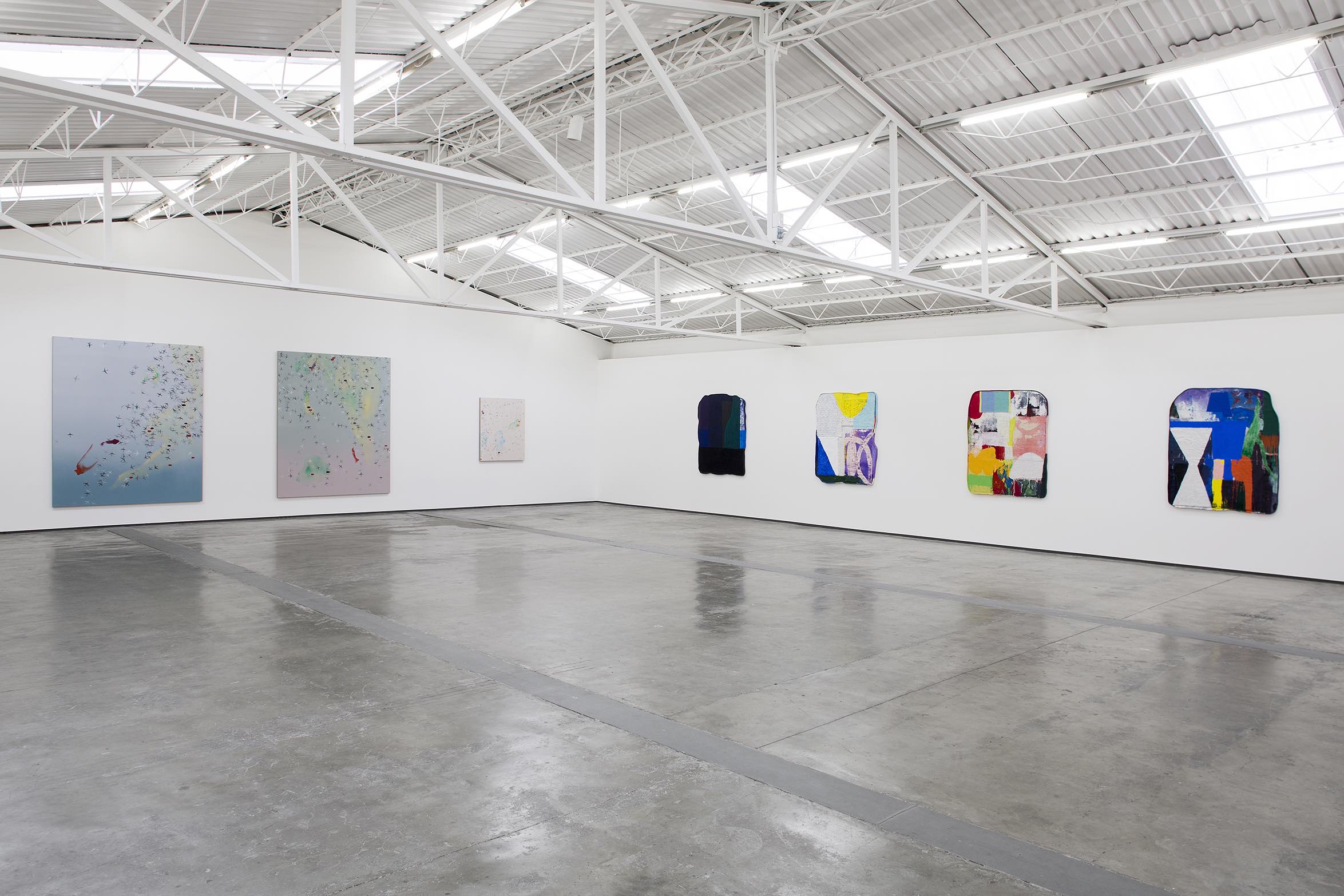
Review
About 'Who’s Afraid of Red, Yellow and Blue ?'
by María Cristina Torres Valle Pons
At Proyectos Monclova
Reading time
4 min
Seven artists convened in search of some trace of the spirit of painting after years of hundreds of forensic affirmations about the closure of their practice, the cyclical hypothesis of their neo-neo-neo-effectiveness, and the immemorial outbreak of conversations from the chromatic dimension.
The eighth presence in the show is spectral. In the late 1960s, the American painter Barnett Newman created a series of four paintings titled Who’s Afraid of Red, Yellow and Blue. On two occasions the phrase’s explicit question was palpably answered: in 1982 a student attacked Who’s Afraid of Red, Yellow and Blue IV, and something similar happened in 1986 when someone (“a confused man” according to the Stedelijk Museum*) cut Who’s Afraid of Red, Yellow and Blue III with a razor. Perhaps something in each of these acts of iconoclasm confirms the power of what destroys.
Javier Areán
Smoke on arrival. A pyroplastic cloud pulses through the crater of a volcano and through the white-blue oil in front of which one remains safe from the smell and temperature of the eruption. All around appear the impressions of other spectacles, those that stand on a sad, macabre, or cruel backstage.
.jpg?alt=media&token=9076855f-3353-4bf3-b38f-d789e299ed04)
Elsa-Louise Manceaux
Three paintings about any one of those instants in which thousands of planes are flying over and plaguing the earth. A journey among an application’s digital data, giving access to the flow of information about air transfers and the inaccessible layover of a chromatic atmosphere, emerging in order to indicate positions floating over fictional geographies. Painting that speculates about the appearance of the infosphere and the framework by which the sky is (in)visibly traced.
.jpg?alt=media&token=9695d379-9594-4eb3-8567-e9577de17618)
Michael Conrads
The creasing of the space, thanks to the illusion of linear perspective, unfolds from the canvases towards the white of the gallery. In a vertigo of color are raised walls together with fences, doors, and corridors of geometries painted from an isometric and vibrant horizon. The paintings’ architectonic imagination overflows towards the construction sustaining them, moving between fiction and the expression of abstract structures.
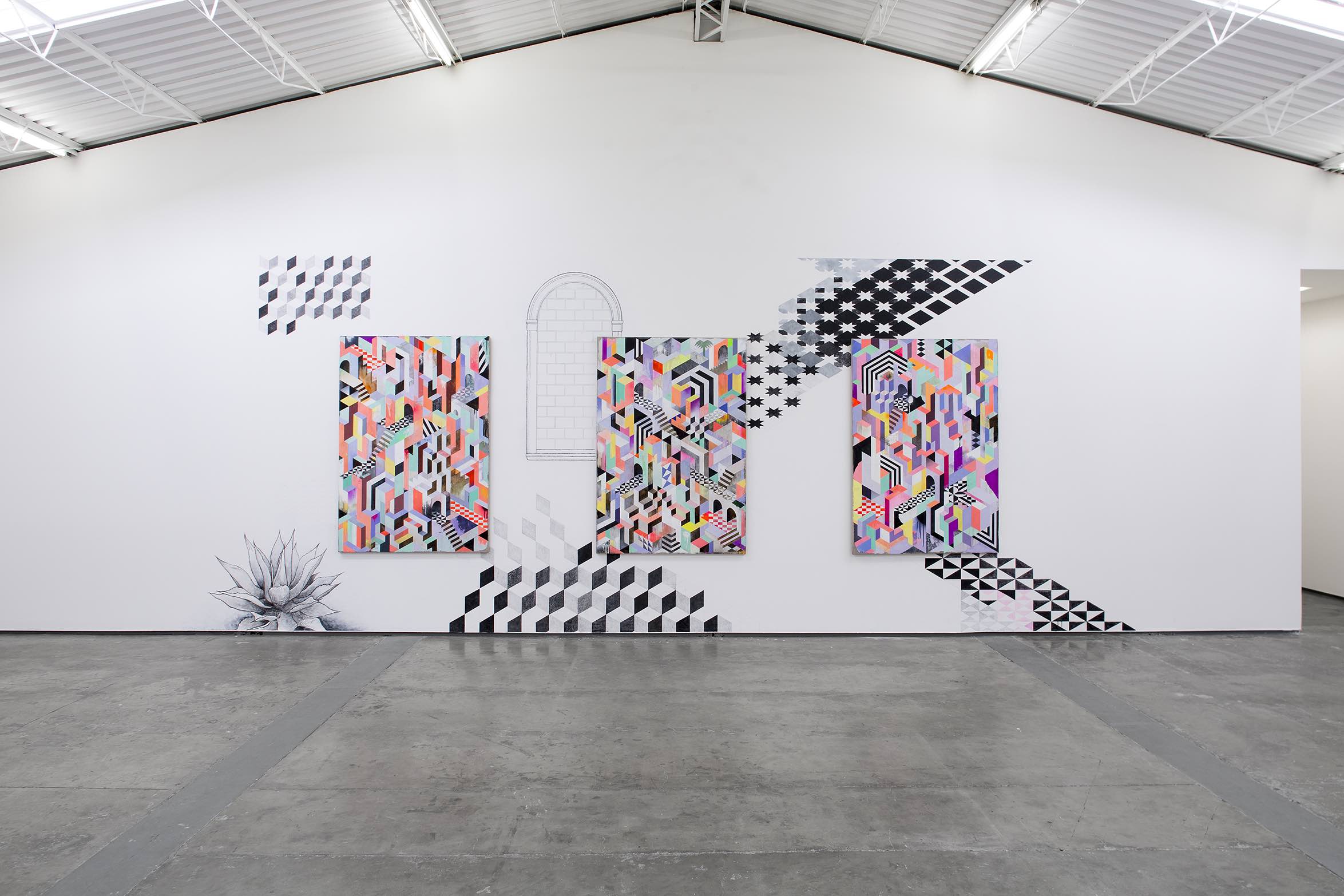
James Benjamin Franklin
Within the half-melted format of the stretcher bars has been created a continuous overlay of paint on sand, on plaster cloth, on wire cloth, on cloths and resin. The encounter of four variations of the stroke, the shape and the color field appealing to the eyes as much as to a certain memory of the skin.
.jpg?alt=media&token=96676420-e891-44f7-9b3e-a414c5895265)
Sebastian Black
At the opposite end of the gallery, sharp lines draw the transition of undulating shapes between color blocks and precise figures. Works that engage in dialogue with the legacy of modern abstraction and possible recompositions of the chromatic experience. Their prolonged titles superimpose a further layer of words, in which everyday experiences such as a cup of green tea, whale-watching, and a hurricane are yet another piece in this dialogue with the interaction between color and formal tradition.
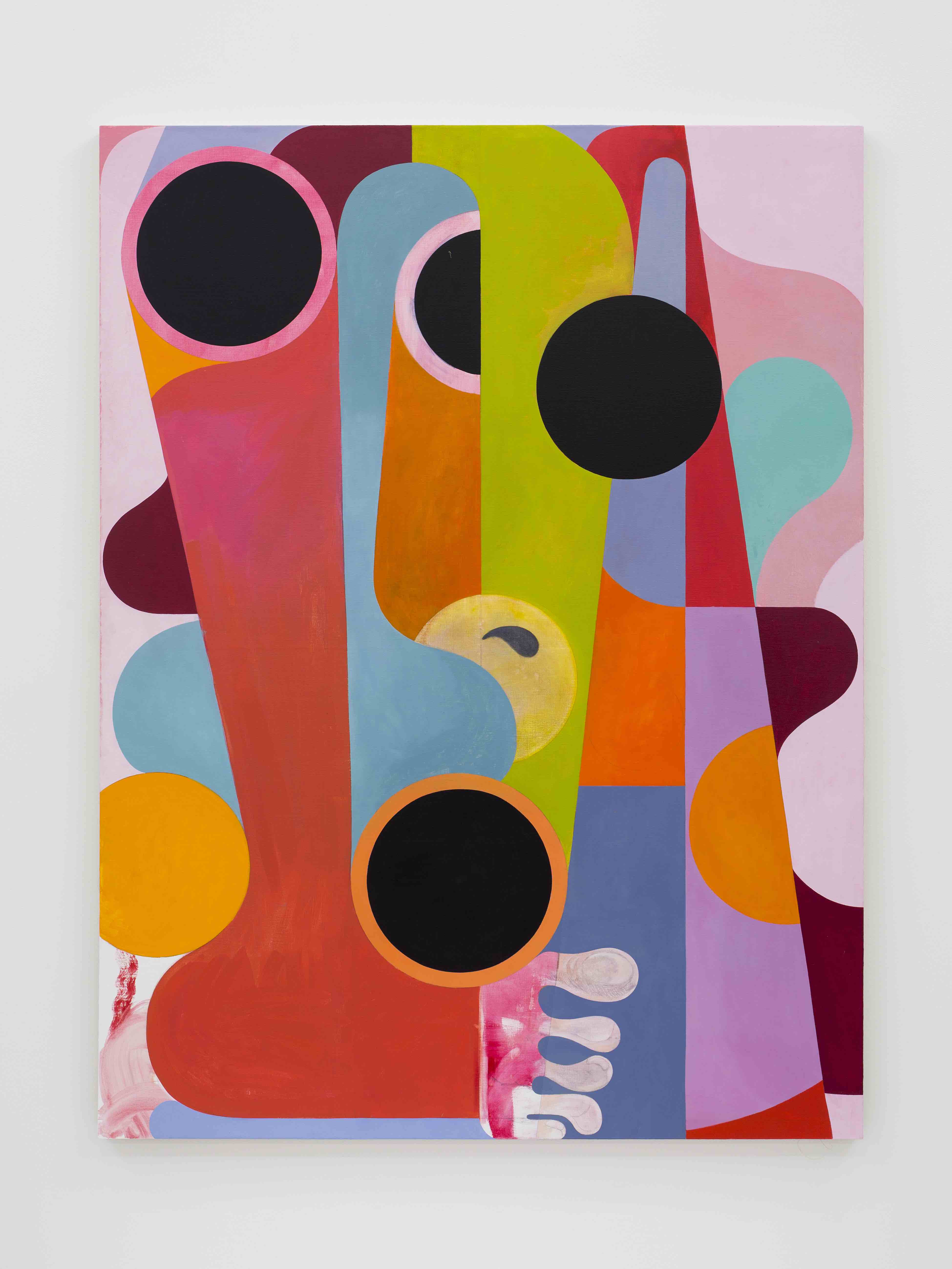
SANGREE
Historical reworking makes raw material out of the icon, a respite from the ways that time has been configured. Taking and modifying the legacy of prehispanic vestiges displaces the operation by which the monumental past, as well as the present of analytical worship, are created, for the first time allowing them instead to print an echo of themselves in new volumes of mass, with voices of replication, memory, and appearance.
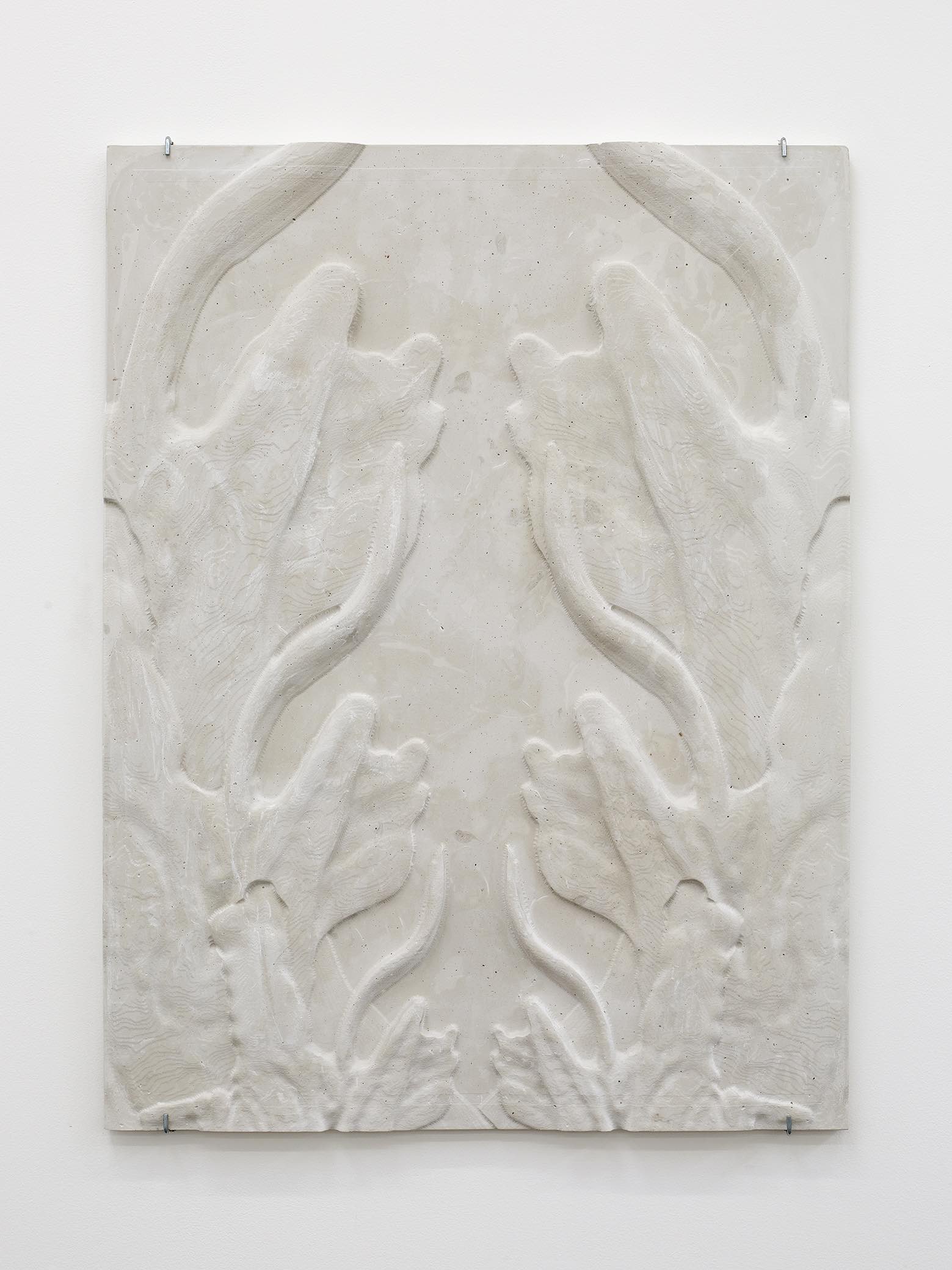
Néstor Jiménez
A separate room for talk coming from outside. Painting on wood recovered from a place where knowledge intersects with stories about the unfair distribution of resources; the buildings of the Nueva Aztlán Housing Unit—founded by the Francisco Villa Popular Front in Mexico City’s east—are represented through the prism of deserted architecture, designed from the perspective of leaks, overflow, wear, and fracture. Smoke in the last room.
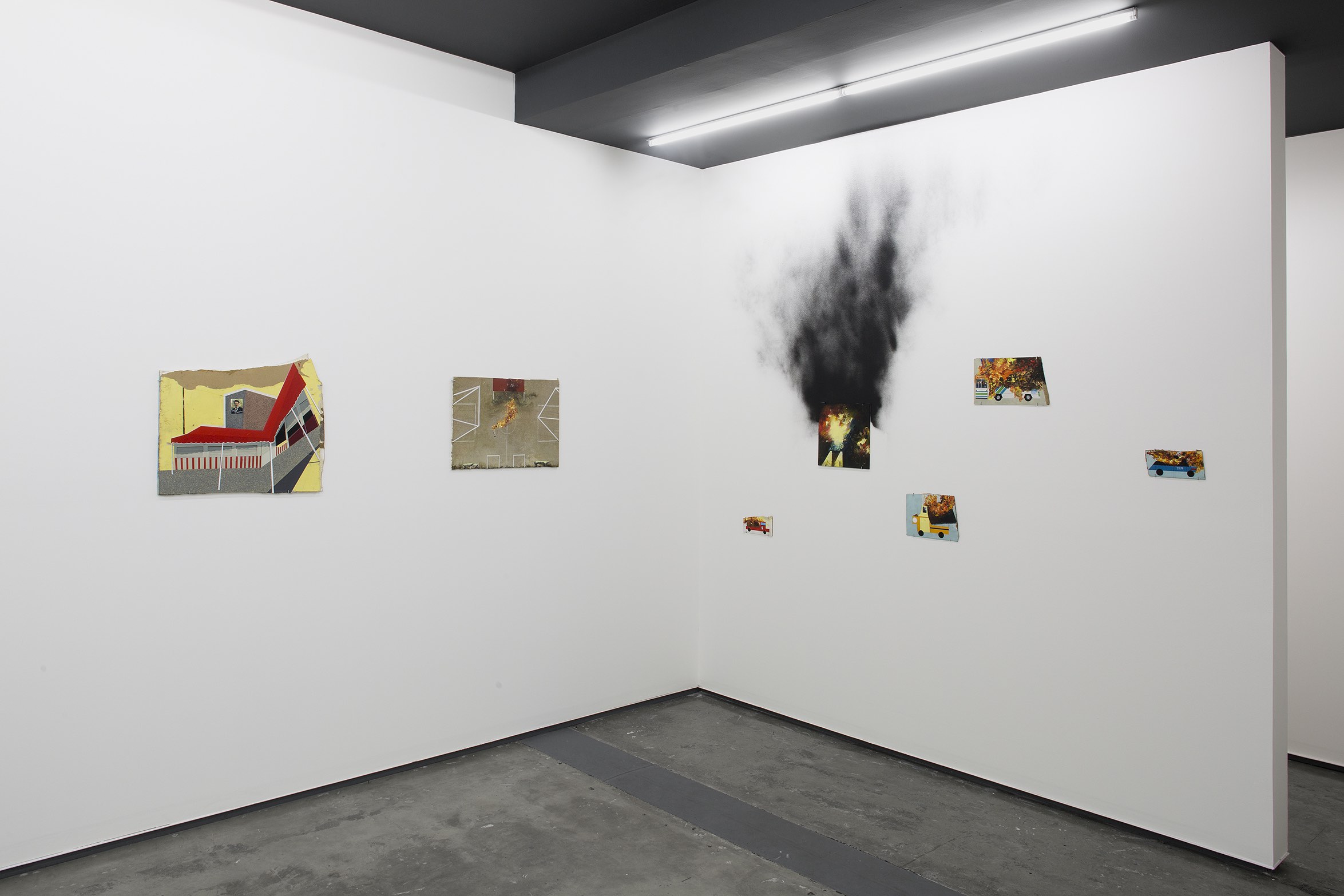
So far, all the works in this exhibition are intact. Perhaps we no longer have anything to fear of red, yellow, and blue.
*https://www.stedelijk.nl/en/exhibitions/63824, consulted on September 11, 2019.
Published on October 4 2019